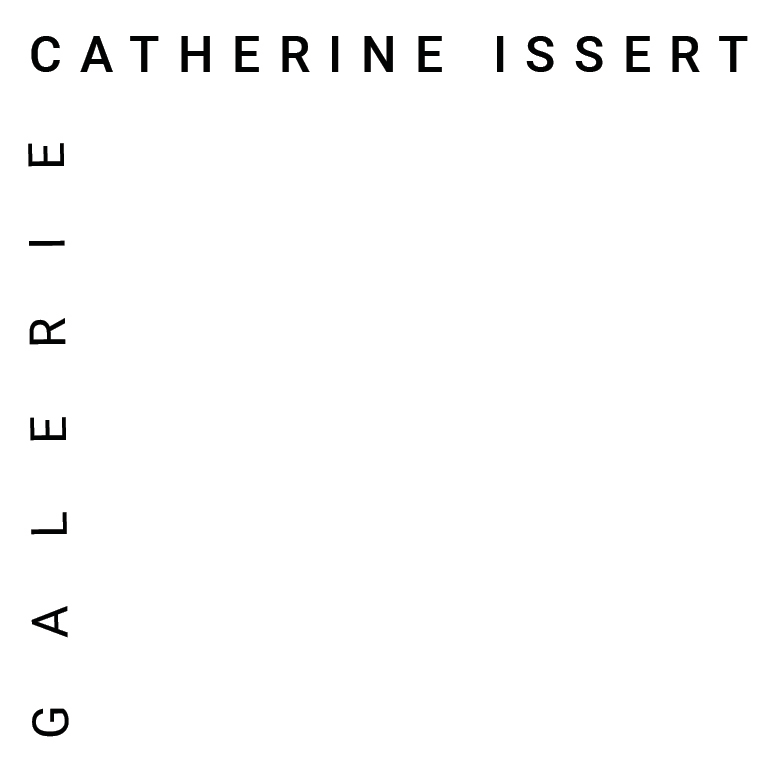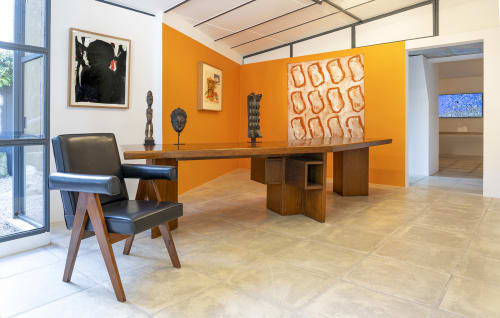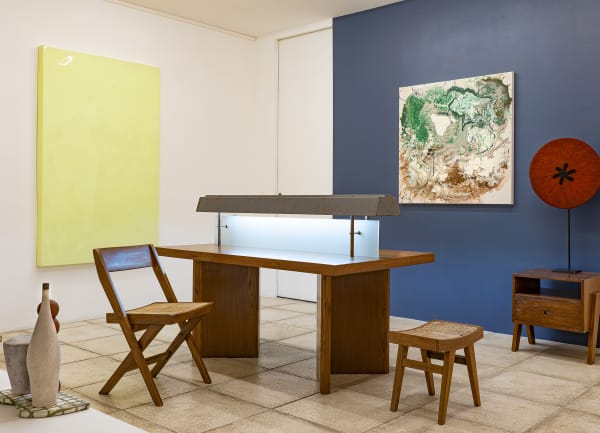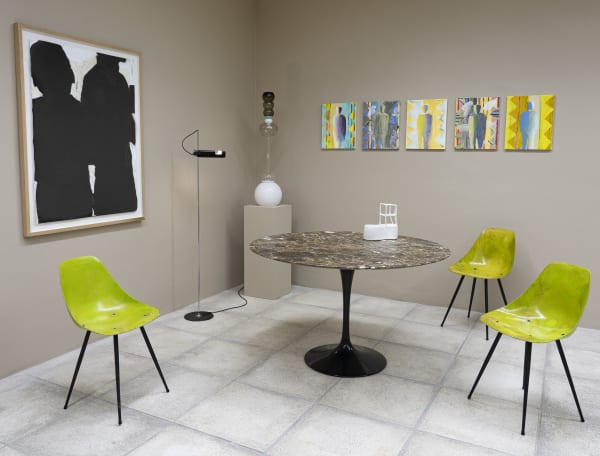LA POSSIBILITÉ D'UNE COLLECTION II
ARTISTES
Jean-Michel ALBÉROLA, John M ARMLEDER, Cécile BART, BEN, Jean Charles BLAIS, Denis CASTELLAS, Daphné CORREGAN, Pierre DESCAMPS, Jennifer DOUZENEL, Alexandre DUFAYE, Yayoi GUNJI, Minjung KIM, LE CORBUSIER, François MORELLET, Bernard PAGÈS, Pascal PINAUD, Benjamin SABATIER, Mathieu SCHMITT, Vladimir SKODA, Xavier THEUNIS, Gérard TRAQUANDI, Claude VIALLAT, Marine WALLON, Tatiana WOLSKA
DESIGNERS
Charles et Ray EAMES, Joe COLOMBO, Pierre GUARICHE, Pierre JEANNERET, Jacqueline MORABITO, Jasper MORRISON, Warren PLATNER, Eero SAARINEN
En confrontant le design à l’oeuvre d’art,la galerie Catherine Issert invente la possibilité d’une collection.Recréant un appartement imaginaire dans son espace d’exposition, elle tisse des relations potentielles entre des designers qu’elle affectionne et les artistes qu’elle défend.
En collaborant avec Jacques Dworczak collection, Bel Oeil et la complicité de Jacqueline Morabito pour la scéno- graphie, Catherine Issert fonde sa sélection sur des affinités sélectives à la subjectivité assumée, témoignant des passerelles existant entre ces deux domaines de création.
Des corrélations formelles pourront naître de ce dialogue, mettant en lumière les influences réciproques que ces deux types de pratique ont entretenues tout au long du XXe siècle et qui perdurent aujourd’hui. Que ce soit Bauhaus, héritier du cubisme et du futurisme, le Pop Art se saisissant du statut esthétique de l’objet industriel ou bien encore l’invention du ready-made, toutes ces démarches témoignent de la porosité entre arts plastiques et arts appliqués, systèmes aux pensées spécifiques mais dont les intentions esthétiques et plastiques peuvent se rejoindre, voire parfois être identiques.
Vue par le prisme de l’histoire de la galerie Catherine Issert, durant laquelle la galeriste a constitué son catalogue, l’Histoire perd sa majuscule pour devenir intime. Sa proposition, transhistorique et transdisciplinaire, invitera à penser la relation ambigüe qu’entretiennent l’oeuvre et l’objet dans un environnement spécifique. Le white cube disparaît ici au profit d‘une atmosphère plus chaleureuse, qui amènera le spectateur à reconsidérer son rapport à l’oeuvre en dehors du champ muséal : pendant un instant, il pourra se projeter dans une vision tout à la fois personnelle et universelle pour inventer, pourquoi pas, la possibilité de sa propre collection.
Avec la collaboration de
Bel Oeil/ Nice Cannes Monaco Collection Jacques Dworczak Galerie Afrique-Alain Dufour Galerie Zlotowski Paris
______________________________________
By confronting design with artwork, the Galerie Catherine Issert invents the possibility of a collection. Recreating an imaginary apartment in her exhibition space, Catherine Issert cultivates potential relationships between desi- gners she finds appealing and artists whose work she presents.
In collaboration with Jacques Dworczak collection, Bel Oeil and complicity of Jacqueline Morabito for scenogra- phy, Catherine Issert bases her choice on selective affinities with fully assumed subjectivity, bearing witness to the bridges that exist between these two fields of creativity.
Formal correlations become evident from this dialogue, shedding light on the reciprocal influences that these two types of activity have exercised throughout the 20th century and which still exist today.Whether it be the Bauhaus, heir to Cubism and Futurism, Pop Art appropriating the esthetic status of the industrial object, or the invention of the ready-made, all these approaches testify to the permeability between the fine arts and applied arts, systems with their own specific concepts, but whose esthetic and formal intentions can relate to each other, and sometimes even be identical.
Seen through the prism of the history of Catherine Issert’s gallery, during which she has compiled her own ca- talogue, history loses its first two letters to become more personal. Her proposal, trans-historic and trans-disci- plinary, is an invitation to consider the ambiguous relationship entertained by the artwork and the object within a specific environment.The white cube disappears here to make room for a warmer atmosphere, encouraging viewers to review their rapport to the artwork outside the context of a museum : for an instant, they will be able to project themselves into a vision both personal and universal, to invent, perhaps, the possibility of their own collection.
With the collaboration of
Bel Oeil/ Nice Cannes Monaco Collection Jacques Dworczak Galerie Afrique-Alain Dufour Galerie Zlotowski Paris



















